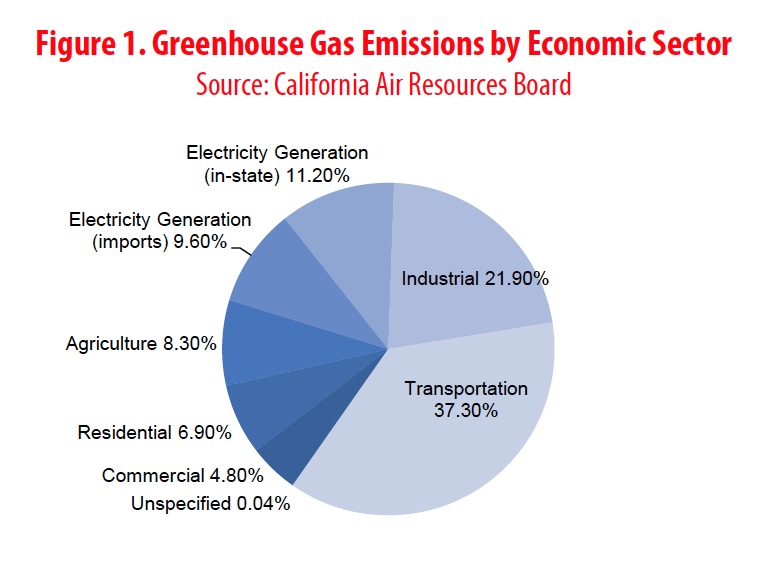UNIVERSITY OF CALIFORNIA, LOS ANGELES
EMMETT INSTITUTE ON CLIMATE CHANGE AND THE ENVIRONMENT
Written by Ethan Elkind
Introduction
On December 1, 1925, a 4,325 foot-long subway tunnel (approximately four-fifths of a mile) opened in downtown Los Angeles, from Pershing Square to 1st and Beverly, northwest of downtown at Glendale. Construction took eighteen months, at a cost of $3,500,000 ($47.4 million in 2014 dollars). It followed one year of major planning.
Fast forward to 2014, and the Los Angeles County Metropolitan Transportation Authority (MTA) analyzed plans to build a similar tunnel in a different part of downtown. The MTA estimated the 1.9 mile downtown regional connector tunnel would cost over $1.427 billion. At $751 million per mile, the new tunnel entailed almost a thirteen-fold price increase from the inflation-adjusted $59 million per mile in 1925. Advance work on the regional connector began in July 2014, and MTA officials expected the line to boost ridership by 10 percent across the rail system primarily by eliminating the need for transfers among multiple light rail lines.
The increase in cost for the regional connector tunnel resulted in part from higher prices for real estate acquisitions, construction materials, worker safety technologies, skilled labor, and more advanced construction equipment. But despite improved construction technology, the timelines have only gotten worse. In 1925, workers took 19 months to tunnel using primarily steam shovels, while modern workers, with an expensive tunnel boring machine and the most advanced construction equipment available, will require six years and four months for their project. A rate of 23.75 months per mile in 1925 therefore became 40 months per mile in 2014. Meanwhile, the planning process for the regional connector took at least four years, with two years alone elapsing between the completion of the alternatives analysis and the MTA board’s approval of the selection of the preferred route.
The downtown Los Angeles tunnels are just one example of the ballooning price tags and protracted planning and construction processes afflicting public transit projects in California and across the United States. To be sure, these challenges are not unique to transit projects. Infrastructure projects ranging from the new Oakland-San Francisco Bay Bridge to Boston’s Central Artery/Tunnel Project (known as the “Big Dig”) suffer the same fate. But the delays and higher costs are arguably more detrimental to the public interest when they affect public transit projects, which are unique among other infrastructure projects due to their central role in protecting the environment and public health, improving the economy, and meeting social equity goals by serving the transit-dependent.
This brief seeks to explain some of the causes of the planning and construction delays and escalating costs for major public transit projects, such as rail and bus rapid transit. Among the factors are counter-productive regulatory processes, lack of coordination among overlapping agencies and entities, poor agency oversight of construction, and political compromises meant to appease powerful neighborhood groups and automobile drivers at the expense of the regional good.
The brief recommends policies to overcome the major barriers to better, faster, and cheaper planning and construction of public transit.
Recommendations include:
1. Reform regulations to ensure that transit serves areas with the densest population and job concentrations;
2. Change state laws to allow local agencies to prioritize transit over automobile traffic;
3. Require stricter oversight of construction management and awards;
4. Allow priority access for buses on existing roads; and
5. Enact new federal, state, and local policies to boost transit funding, such as through tax-increment financing and low-cost loans.
Download full version (PDF): Back in the Fast Lane
About the Emmett Institute on Climate Change and the Environment
www.law.ucla.edu/centers/environmental-law/emmett-institute-on-climate-change-and-the-environment
The Emmett Institute on Climate Change and the Environment is the leading law school center focused on climate change and other critical environmental issues. Founded in 2008 with a generous gift from Dan A. Emmett and his family, the Institute works across disciplines to develop and promote research and policy tools useful to decision makers locally, statewide, nationally and beyond. Our Institute serves as a premier source of environmental legal scholarship, nonpartisan expertise, policy analysis and training.
Tags: CA, California, Emmett Institute on Climate Change and the Environment, Ethan Elkind, UCLA, University of California







 RSS Feed
RSS Feed